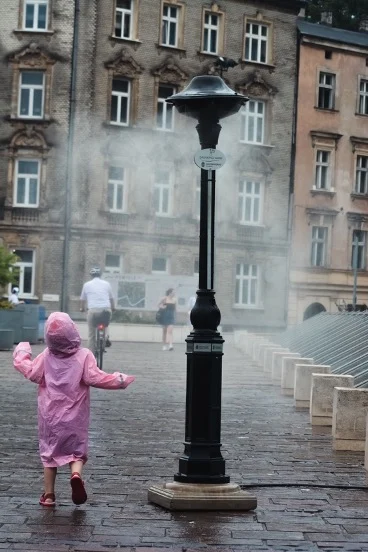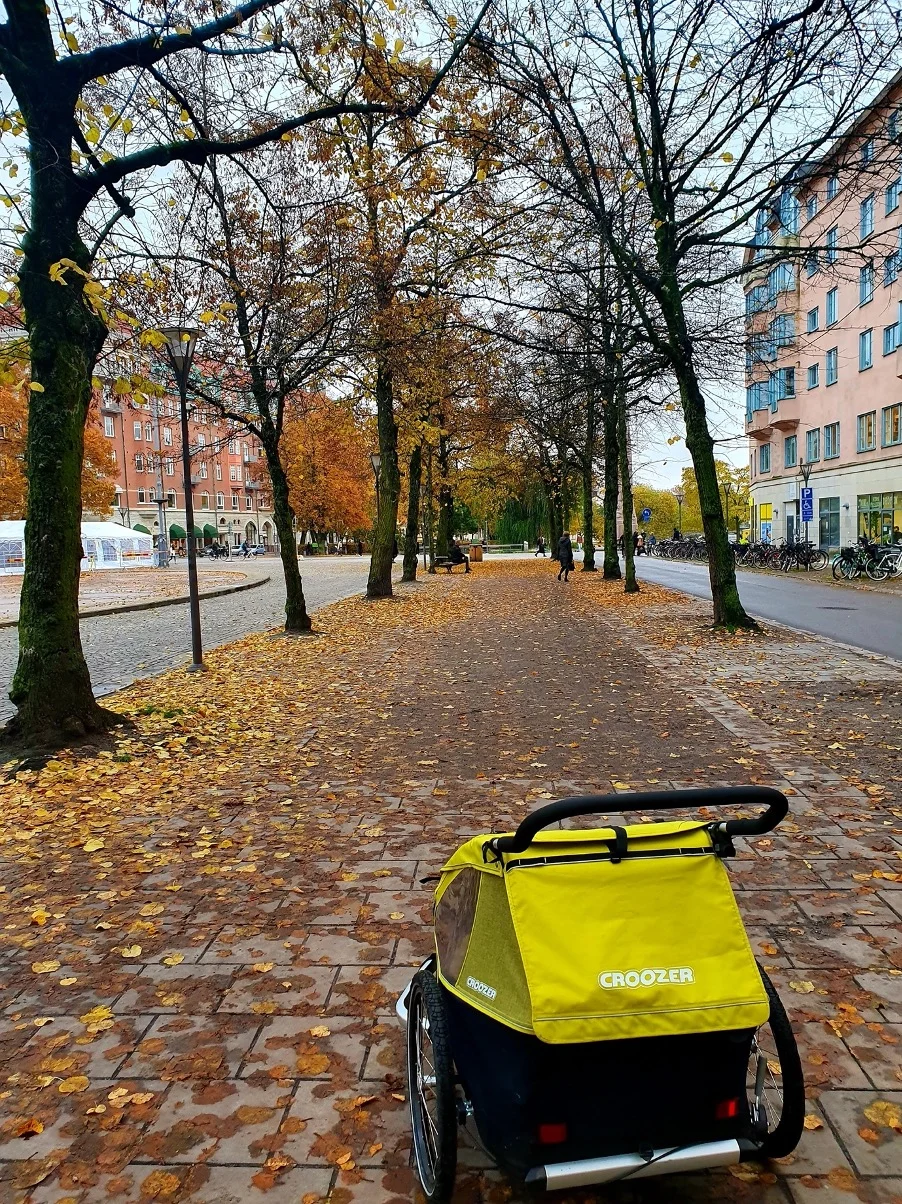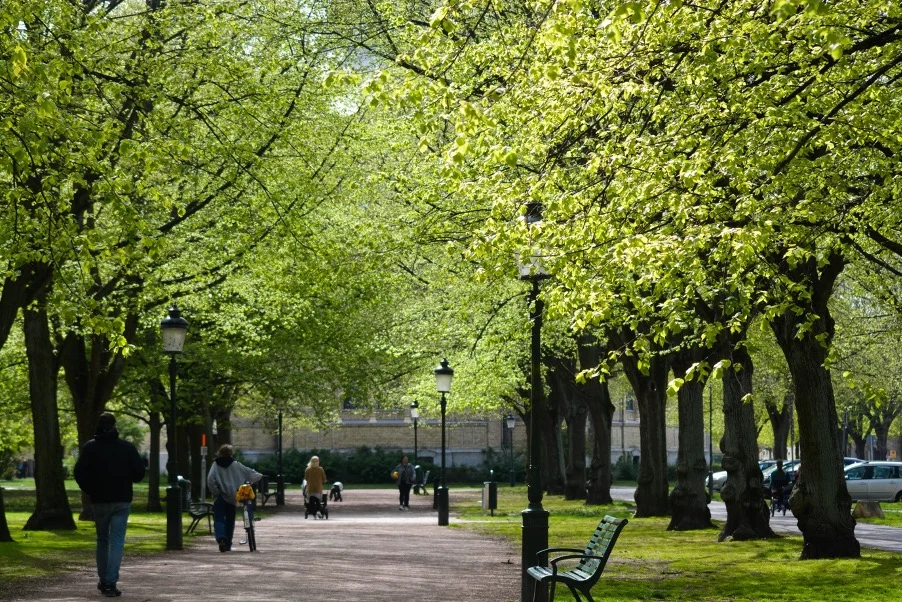Author: Annika Lundkvist
Pedestrian Space is a media and advocacy platform that celebrates and promotes walkability in cities. In the last two years, Pedestrian Space has grown exponentially. We spoke with the founder Annika Lundkvist to find out more about her journey, why she feels pedestrian solutions are so critical, and how one person can generate content at scale and motivate dialogue across continents around critical urban issues.
What is Pedestrian Space and what inspired you to begin it?
Pedestrian Space is a place to share media depicting walkable spaces as well as the challenges in creating them, which is a form of advocacy for me. I find that in many places, people accept car-dominated urbanism as the norm and ‘walkability’ to be an alien concept. I want to disrupt this by using the visual narrative of great as well as sub-par pedestrian spaces to build public awareness and show that ’walkability’ should be a basic function for all communities.
A pivotal moment was in spring 2020, when COVID-19 was disrupting lives globally. There was a lot of media attention on the need for more walkable communities to support health and well-being. This resonated so much with me and I came up with the idea for Pedestrian Space, which I launched on Instagram and Twitter. By January 2021, I also launched the website. These platforms weave together my skills as a photographer and my research interests in urbanism and at the same time support media and advocacy.
Pedestrian Space has very down-to-earth depictions and everyday images of what constitutes good urbanism, which I think people are very drawn towards. At the same time, I also share images of issues that hinder a community’s walkability. The platform offers a space for constructive dialogue which I feel is essential for enabling sustainable change
From your experience, what makes good pedestrian space?
It’s simple. Great pedestrian spaces prioritise mobility and the experience of pedestrians instead of cars. That means space to move, access for different types of movers, comfortable seating, and trees for shade. These are the basics. Yet in many communities, they are neglected or completely absent. For children specifically, it includes the freedom to play and move without car dominance threatening their movement.

Under a misting station, Kraków, Poland © Annika Lundkvist
What are the most discussed topics about pedestrian space?
This can vary depending on the city, region, and culture. One critical topic is access to outdoor and street space for play, which in many places is in peril or non-existent. Safety is also a hot topic: car domination and poor pedestrian infrastructure are growing problems in many cities and they increase the risk of bodily harm or death. Shade and tree equity are also frequently discussed – they are not only necessary for providing thermal comfort for pedestrians, but they are also increasingly important with intensifying heat waves globally.

Planty Park, Kraków, Poland © Annika Lundkvist
[bctt tweet=”Pedestrian Space also fosters discussions on local advocacy for walkability and how cities are promoting walking or cycling. Championing the rights of children to access play in their community is a crucial part of that.” username=”cities4children”] It’s good urbanism 101: to make cities more liveable for people while putting the needs of children first.
Where does the platform content come from?
Initially, most of the content on the platform showed examples of good practice that I saw in the cities where I lived like Örebro, Sweden. This included images of streets where people had priority over cars or suburbs well connected to city centres with quality footpaths and accessible public transport. But once the platform went live, I was contacted by grassroots advocates, students, professors, built-environment professionals, municipal officials, artists and media folks with similar interests.

Walking in central Örebro, Sweden © Annika Lundkvist
This led to lots of diverse conversations. For example, I often ask people what ‘walkability’ means to them and you can read the diverse responses to this question at Pedestrian Space.
I also wanted these different connections and conversations with people to mean something more. So in early 2022, I established the Global Walkability Correspondents Network. The aim is to:
- Cultivate solidarity for walkability advocates around the world
- Collectively raise awareness on issues related to the pedestrian experience and state of walkability in our communities, and
- Learn collaboratively how to create walkable communities and exchange knowledge across borders.
As of November 2022, there are over 140 members in the network, cities spanning across the world.
How can people advocate for more pedestrian space?
The first thing is to find allies. These might be local journalists who cover issues of walkability or someone in the local city administration pushing for policy and material change. You might find allies in your own neighbourhood: fellow community members who are fed up with the lack of safe, quality pedestrian space and the increasing dominance of motorised transport. Look for local, national and international advocacy groups that can offer solidarity and support for change. Make the problem known.
What are the biggest obstacles and how does Pedestrian Space enable change?
The obstacles can be complex and very specific to local culture. I know a number of politicians who are extremely passionate about pedestrianisation but get a lot of pushback from the public. These members of the public might feel territorial about weekend free parking (for example) or antagonistic about changes that accommodate anyone other than drivers. But at the same time, there is no shortage of stories about residents rallying to make their communities less car oriented.
[bctt tweet=”So, change is not simply about creating space to move. It’s about engaging people’s minds so that we ask, why is it so important to reclaim space to create more walkable communities?” username=”cities4children”] As a media and advocacy platform, engaging the public in thought and discussion about these issues is central. Media is an important and powerful channel for shaping awareness. Without awareness of the problem and without education on the benefits of walkability, much of the public can be unaware that they too can play a role.
For me, creating and curating content to build awareness, education and advocacy around ‘walkability’ is key to driving change. We need to bring different groups together in non-judgemental and constructive ways to explore what is possible.

Malmö, Sweden: access to nature is a common public good and an issue of community health and equity © Annika Lundkvist
What’s next for Pedestrian Space?
I want to encourage deeper engagement around aspects of walkable urbanism, and healthy and climate-resilient cities using the lens of ‘walkability’. I enjoy the scope and potential reach of digital media but not everyone is on social media or online. So I also want to develop print media – such as a small magazine about ‘walkability’ – that can potentially reach different audiences.
The Global Walkability Correspondents Network at Pedestrian Space is quite young but growing. I’m looking forward to growing a dynamic, truly interdisciplinary and deeply multicultural network that is rooted in advocacy, learning, and international collaboration. Up to this point, Pedestrian Space has been a project run by volunteers but I am exploring avenues to further grow this work. I’ve also recently accepted a position as a PhD student and look forward to researching walkability and using Poland’s capital as a living urban laboratory.
About the Author
Annika Lundkvist is editor and founder of Pedestrian Space, a fellow at the Schumacher Institute and a PhD student at the Institute of Geography and Spatial Organization, Anthropos Doctoral School, Polish Academy of Sciences.
This work is licensed under a Creative Commons Attribution-NonCommercial-NoDerivatives 4.0 International License. When re-sharing this content please ensure accreditation by adding the following sentence: ‘This blog was first published by the Global Alliance – Cities4Children (www.cities4children.org/blog)’

